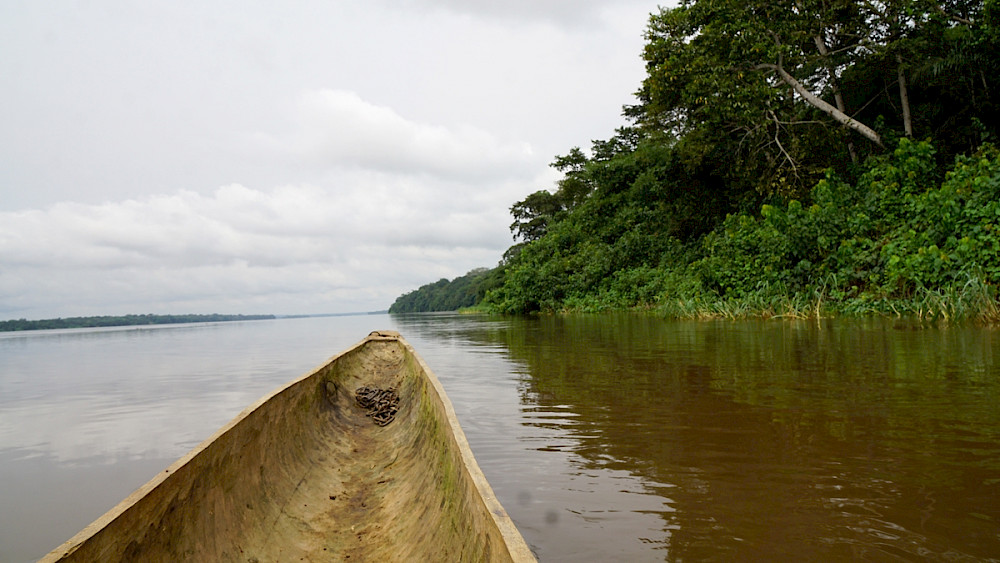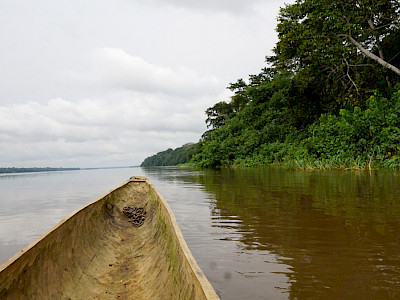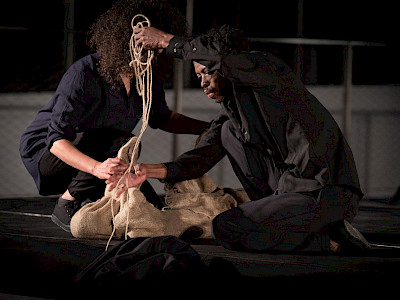04 — 07.05.2018
Faustin Linyekula Kisangani
Banataba
dance
Koninklijk Museum voor Midden-Afrika / Musée royal de l'Afrique centrale
French → NL, EN | ⧖ ±50min | € 18 / € 15 (-25/65+) | The performance will take place outdoors. Please dress warmly | Meet the artists after the performance on 5/05
Somewhere in the storerooms of the Metropolitan Museum in New York, a wooden Lengola statuette, deemed to be without value by conservators, takes the Congolese Faustin Linyekula on a journey back to his ancestral village of Banataba. The trip is a symbolic return. It examines the history of this sculpture, removed from its original context during colonisation, with Linyekula’s own trajectory. How can the complex puzzle of his country – now the Democratic Republic of Congo – be put back together when the pieces are scattered all over the West and its major museums? For the Kunstenfestivaldesarts Linyekula takes over the Royal Museum for Central Africa in Tervuren, which is still closed for visitors due to renovations. In the empty wing of the new building alongside the dancer Moya Michael, he tells of this return journey and questions through words and movement the role of the museum as a witness of the dispersal of heritage from other countries. A fiery duet that calls for history to continually be rewritten in the present.
Objects have never really interested me. I’ve always preferred people and their stories… And yet some objects have the power to get you moving, literally… Invited to do a performance at the Metropolitan Museum in New York and to look through the museum’s collections for an object, a sign, something that would connect me to my Congo again – because wherever I go in the world, I always seems to be looking for a piece of Congo that would help me put together the pieces of this huge puzzle that has been pushed around so much by history – I came across this statue, a single arm, wood and pigment, less than a metre high, a beautiful statue to me, but considered minor and kept in the museum’s stores. This statue is the only one by the Lengola ethnic group, my mother’s tribe… and it was this object, held by one of the world’s largest museums, that several weeks later was taking us – my mother, my uncle, my cousin and I on motorbikes and dugouts – tens of thousands of kilometres away to Banataba, the village of my mother’s tribe. She hadn’t been back since 1975 when I was a year old… So why did I have to got to New York for this journey to Congo to happen, for this research to begin, for these questions to emerge… Is it possible in museums to shift an object’s discourse towards what it sets off, what it reveals in the eyes, the body, the head of the person looking at it? I therefore symbolically decided to return this statue to the land to which it belongs, to the communities for which it was designed and should speak… Because traditionally the most beautiful masks, the most beautiful statues were not locked away in the chief’s hut for the sole pleasure of the initiated, but instead stood imposingly at the public square in the middle of the village. Children played next to where dogs hung around and pissed, where termites were doing their thing, but sometimes magic happened… Aren’t masks and statues the archives of these villages, of these communities, linking the memory of ancestors to the births to come? How can these communities rediscover a link with a plundered past scattered over there? What is left of the stories from there in the museums over here?
Faustin Linyekula
Artistic direction
Faustin Linyekula
Performed by
Moya Michael, Faustin Linyekula
Video & sound
Faustin Linyekula
Presentation
Kunstenfestivaldesarts, Royal Museum for Central Africa
Production
Studios Kabako / Virginie Dupray
Coproduction
Metropolitan Live Arts (New York)
With the support of
the Royal Museum for Central Africa, the French Institute Alliance Française in New York (FIAF) in the framework of the Crossing the Line festival






Notice: Undefined index: v in /home/kfda/public_html/site/assets/cache/FileCompiler/site/templates/inc/functions.inc on line 39

